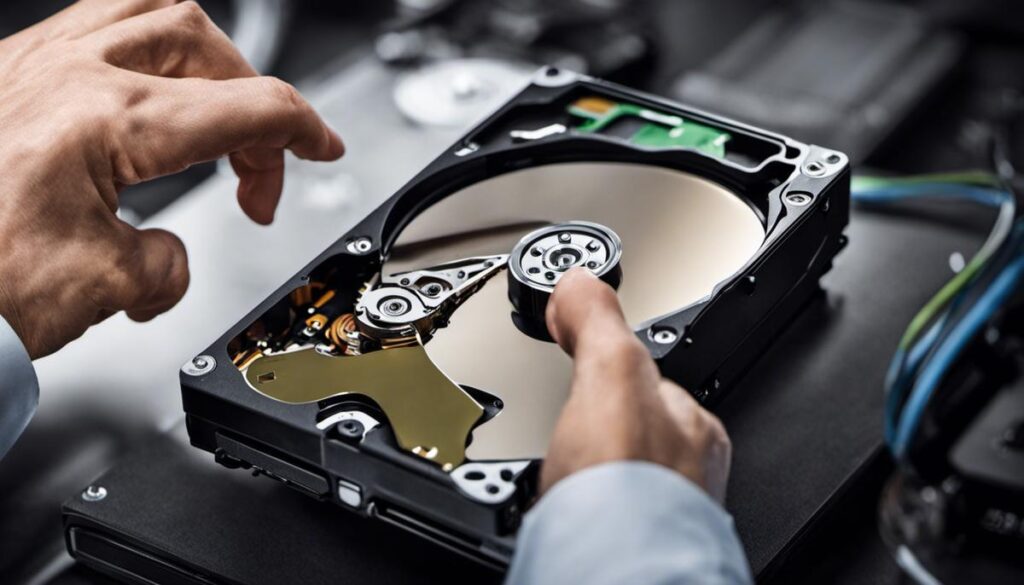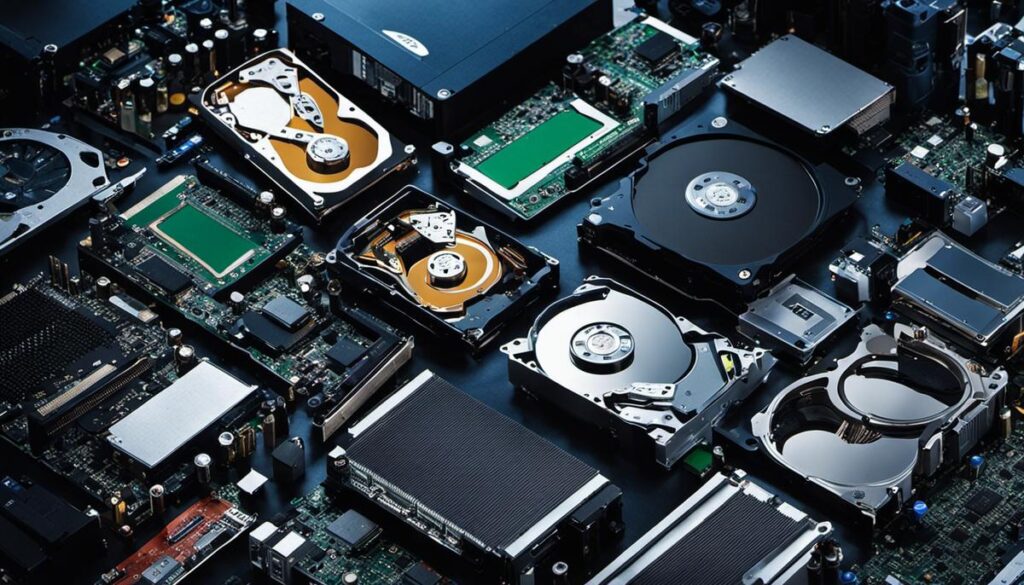2nd hard drive not showing up? This can be due to a myriad of reasons, from hardware connectivity issues to software settings and drive formatting. This guide seeks to demystify these concepts, starting with a basic understanding of computer hardware. It will also delve into BIOS settings and boot order and, finally, guide you on how to manage and format your drives effectively.
Understanding Computer Hardware
A Beginner’s Guide to Troubleshooting: Essential Knowledge on Computer Hardware
As we further plunge into the digital age, understanding the basics of computer hardware is becoming a necessity rather than a luxury. Troubleshooting issues on your computer can save time and resources while simultaneously boosting your tech-analytical skills. While there are a plethora of aspects to consider when troubleshooting, this article will guide you through the fundamental computer hardware knowledge you need to get started.
A. Understanding the Role of Hardware Components
- Central Processing Unit (CPU)
- Random Access Memory (RAM)
- Storage
- Power Supply Unit (PSU)
- Motherboard
B. Mastering Basic Troubleshooting Skills
- Navigating System Software: Understanding your computer’s operating system and how to navigate it, such as Windows or MacOS, is crucial. This includes accessing tools like Task Manager on Windows or Activity Monitor on MacOS, both of which can help diagnose problems.
- Understanding BIOS/UEFI: BIOS or UEFI is your computer’s firmware that checks your hardware components each time you start your computer. Knowledge of navigating and understanding BIOS/UEFI can help to detect a faulty component quickly.
- Checking Drivers: Drivers make the hardware components communicate effectively with your operating system. Keeping tabs on driver updates and diagnosing driver-related problems are important troubleshooting skills.
C. Safety is Paramount
Always ensure your machine is turned off and unplugged when opening it up to prevent electrical hazards. Also, take care to ground yourself to prevent further damage to your components due to electrostatic discharge.
With a keen understanding of how the key components mentioned above work and how to navigate your computer’s system software safely, you’re on the right path to troubleshooting basic hardware issues. Remember, all great tech enthusiasts started somewhere. With continual learning and hands-on experience, the complex world of computer hardware troubleshooting will certainly become much clearer.
While we’ve taken a brief tour through the basics, further learning will foster proficiency. And who knows? Maybe one day, you’ll be guiding a beginner through their first hardware troubleshooting steps.

Understanding BIOS Settings and Boot Order
Unveiling the Mystery: How BIOS Settings Influence the Visibility of Your Second Hard Drive
One of the puzzling challenges that technology enthusiasts often overcome is managing BIOS settings to increase the visibility of a second hard drive. It may feel like venturing into uncharted territories, but with a firm grasp of the system software’s functionality and keen analytical observation, finding your way to clarity isn’t as complex as it may seem.
To begin, it’s important to understand that the BIOS (Basic Input Output System) is a program pre-installed on the motherboard that initializes hardware during the booting process. Its main job is to test that all system requirements are in order prior to loading the operating system. The fascinating aspect of BIOS is that it directly affects whether your system can recognize an installed second hard drive.
Prior to making any adjustments in BIOS, make sure you’ve adhered to all safety precautions. The components are incredibly sensitive to static electricity. So, use an anti-static wristband and ensure you’re working in a clean, dust-free environment. Secondly, remember that it’s always advisable to keep a backup of your important data in an external drive, just in case things don’t go as planned.
Now, into the BIOS settings. Restart or power on your system, then press and hold the designated key (usually F2 or DEL) to enter the BIOS setup. Here, an interface will appear with various options. Look for a setting called “SATA Configuration”, “Drive Configuration”, or similarly named settings depending on your BIOS version.
Inside this section is the essential “Hard Disk Drive (HDD) or Solid-State Drive (SSD)” setting. The visibility of your second hard drive is dependent on whether this particular BIOS setting is enabled. If disabled, your system will be oblivious to the existence of a second hard drive. So, by simply enabling this setting, you are promoting your second hard drive from obscurity to visibility.
If, for some reason, this doesn’t solve the problem, it could be an issue with the “Boot Order” in your BIOS. The boot order dictates which devices your computer looks at first when booting up. It may be set to boot from your first hard drive, ignoring the second one. Adjust it to include your second drive.
As an ardent tech enthusiast, your interest in cracking such daunting yet intriguing riddles empowers you to mold your technology to serve you better. So, never shy away from exploring the paths less trodden, for they may lead toward a more efficient and customized tech experience. Armed with these instructions and a love for the rigors of technological investigation, making that elusive 2nd hard drive visible through tweaking BIOS settings is just another high-stakes adventure. Embrace the challenge!
Understanding Disk Management and Drive Formats
Enabling Your Second Hard Drive: Get in Gear with Disk Management
Let’s dive right in and unlock the mystery of an unrecognized 2nd hard drive. It’s time to roll up your tech sleeves and put your analytical horsepower to work.
To begin with, access your disk management tool. In Windows, you’ll find this under the Computer Management setup in the ‘Storage’ section. This tool allows you to view, manage, and maximize the potential of your storage devices.
Navigate to Disk Management. Here, you’ll see a list of all the storage devices connected to your PC, including your secondary hard drive. If it’s not already visible, you’ve got a puzzle to solve.
The sharp tech that you are, you’ve already checked your BIOS settings. Now that you’re in Disk Management, look for your secondary hard drive here. If there’s an unallocated space, that’s likely your missing hard drive. The blank space indicates that your drive exists, but due to the lack of file systems, it remains invisible to your Operating System (OS).
What you need to do is format the drive so that it will appear to your OS. Right-click on the unallocated space and select ‘New Simple Volume‘. This will start the New Simple Volume Wizard. Follow the prompts, and when prompted for a drive letter, decide on one that suits your fancy. The drive letter you select here will be how the drive shows in the OS from now on.
Now, you’ll be asked to format the partition. You’ve got options like NTFS, FAT, FAT32, or exFAT. For a secondary hard drive, NTFS would be a good choice. This tab also allows you to name your partition. Press ‘Next’ and then ‘Finish’ to wrap this up.
Voila! Your second hard drive should be visible now.
In some cases, your second hard drive may still be stubbornly refusing to appear. In these rare instances, the hard drive itself may be faulty or damaged. In such cases, your tech prowess is better spent on researching replacement drives instead of fighting the inevitable.
But in most situations, the steps above should sort out the issue with your second hard drive visibility. Technology is all about adaptation and problem-solving, so don’t feel discouraged if it takes you a few tries to nail it.
Remember: Learning is an iterative process. By diving into disk management and BIOS mechanics, you’re building your tech know-how, ensuring that no rogue hard drive stays hidden from you for long. Embrace the challenge because with every issue you troubleshoot, you’re fostering your inner tech enthusiast. Don’t automate the solutions; be the solution. Now go on, get your second hard drive in gear.

With robust knowledge of computer hardware, especially hard drives, SATA connections, BIOS settings, and Disk Management, you will be well-equipped to navigate through unexpected issues related to your second hard drive. Moreover, this information empowers you to maximize your computer’s functionality and performance. Understanding your BIOS and its potential adjustments allows you to take control of your boot order and drive detection. The use of Disk Management ensures that you can detect, format, and manage unrecognized or improperly formatted drives, which is pivotal in maintaining seamless computer operation. Ultimately, gaining a comprehensive understanding of these aspects provides a rewarding journey into the world of computer hardware, where you are not just a passive user but an active participant who can identify, isolate, and find solutions to issues independently.

